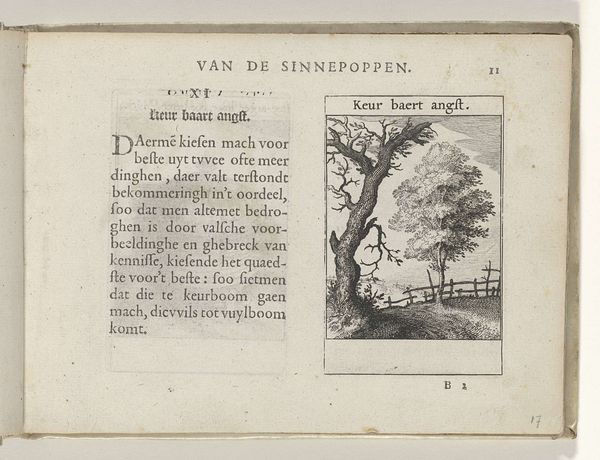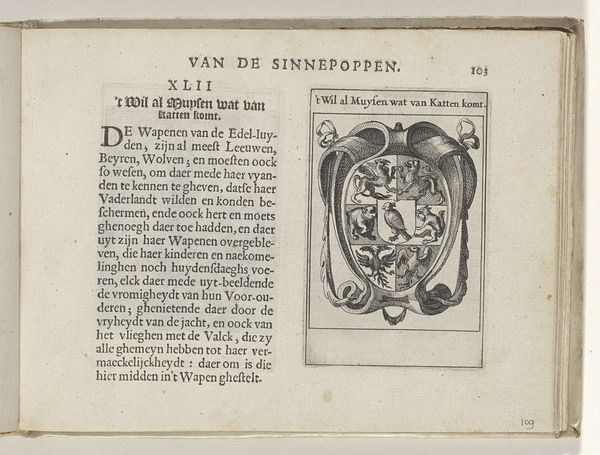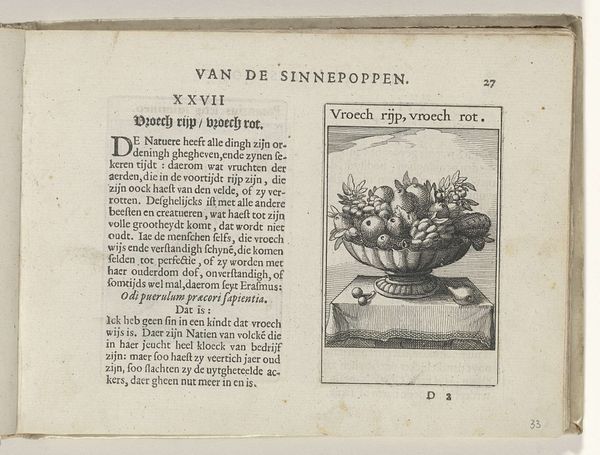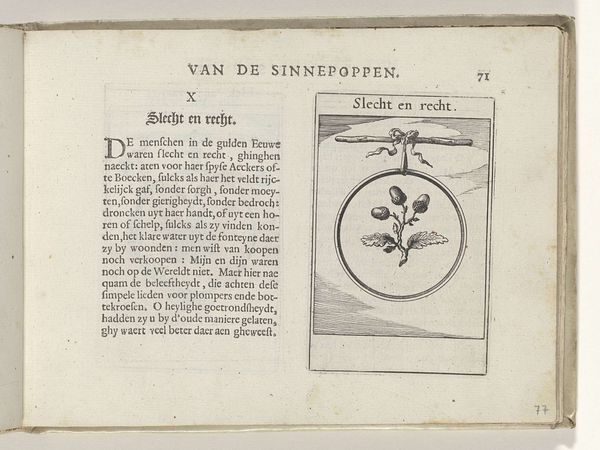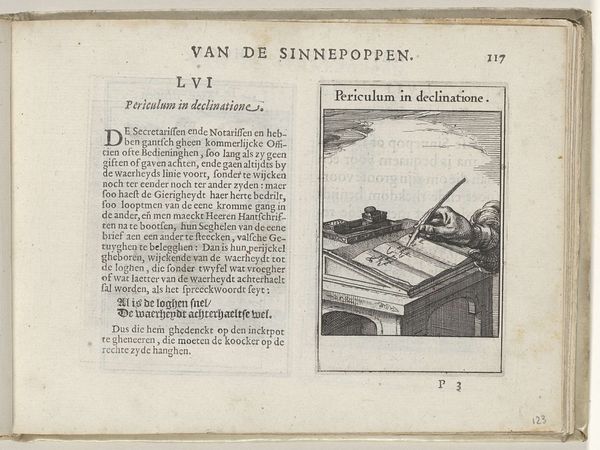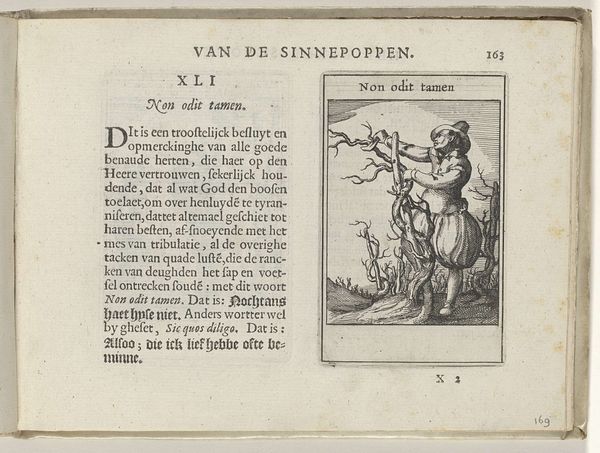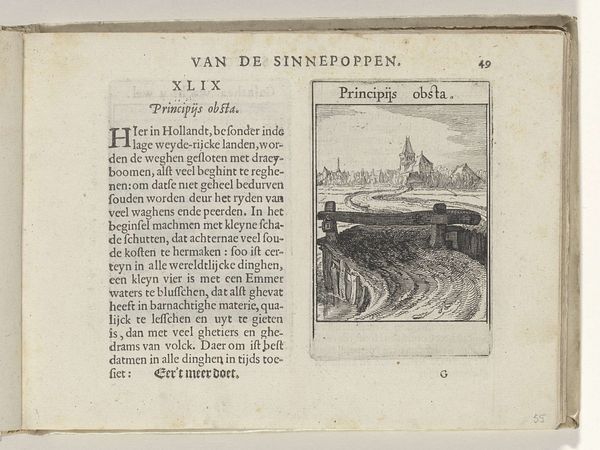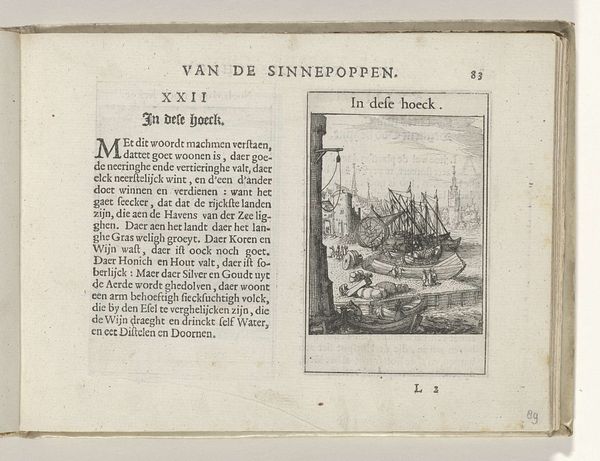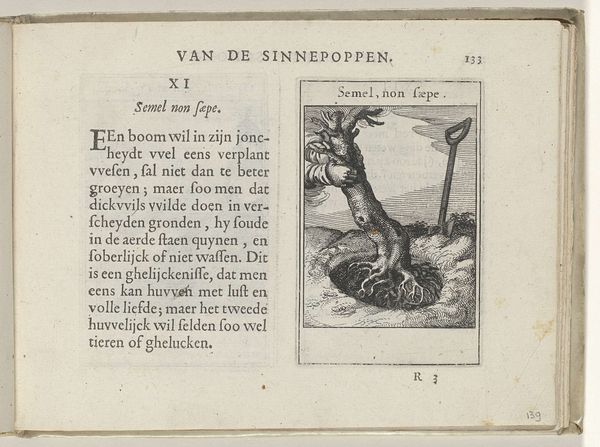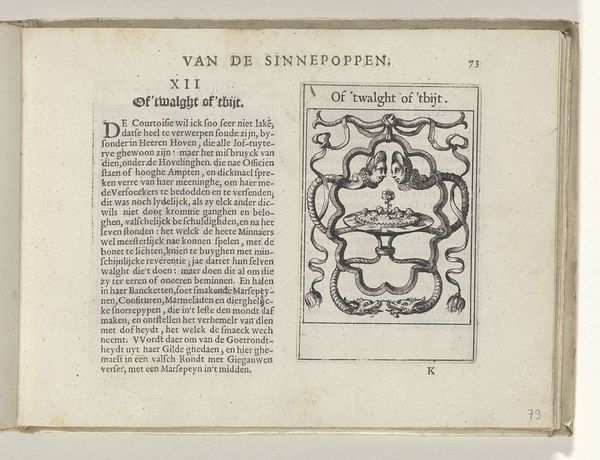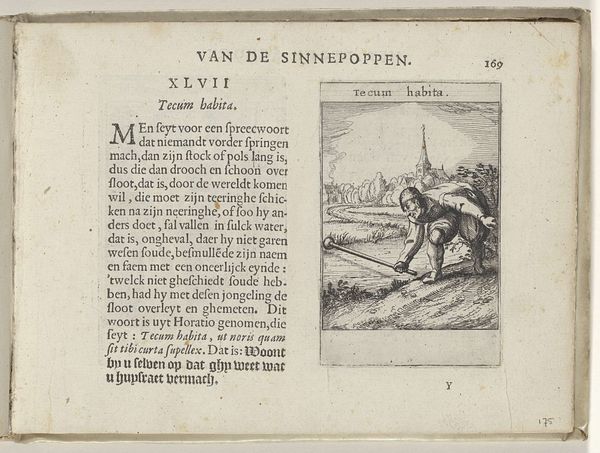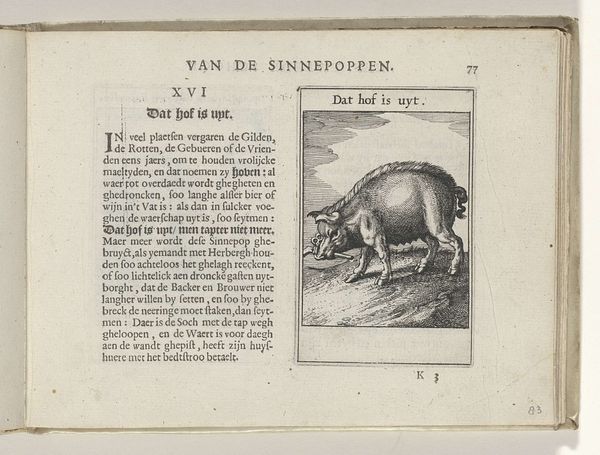
graphic-art, print, etching, paper, engraving
#
graphic-art
#
dutch-golden-age
# print
#
etching
#
landscape
#
paper
#
engraving
Dimensions: height 137 mm, width 188 mm, height 95 mm, width 60 mm
Copyright: Rijks Museum: Open Domain
Curator: Let’s examine this intriguing etching and engraving by Roemer Visscher, crafted around 1614. It’s entitled "V Een dwaes en zijn gelt zijn haest ghescheijden," a piece currently held at the Rijksmuseum. What's your immediate take on it? Editor: My first impression is one of stark beauty and vulnerability. The strong contrast created through etching draws me to the flower, giving it sculptural presence. Curator: Indeed. Beyond its aesthetic appeal, consider the title. Roughly translated, it means "A fool and his money are soon parted," we are dealing with art as a reflection of socio-economic anxieties present during the Dutch Golden Age. The print functions as a moral lesson commenting on early modern capitalism, the tulip mania specifically. Editor: Yes, the tulip's form stands proud, yet trapped within rigid confines, framed within another frame! Do you think the lines evoke an inherent tension and temporality reflective of the financial markets? Curator: Absolutely, the depiction serves as an accessible lesson for everyone; after all, the majority of early modern Dutch citizens were not proficient readers but they could look at images. It's worth reflecting on how the choice of seemingly mundane subjects such as flora becomes so loaded when we look at artistic commentary and social context. Editor: The artist presents an intrinsic connection of morality with ephemeral beauty, like Dutch still life painting or *vanitas*, however, I still observe its compelling visual language: dark shading and linear rendering capture a certain austere quality, maybe one that has stood the test of time. Curator: Absolutely. That convergence of the visual and the contextual reminds us of art’s potential to be so much more than just something pretty on a wall. Editor: Agreed. Seeing art as visual form first certainly gave me an entirely refreshed understanding of Roemer Visscher's social criticism.
Comments
No comments
Be the first to comment and join the conversation on the ultimate creative platform.
